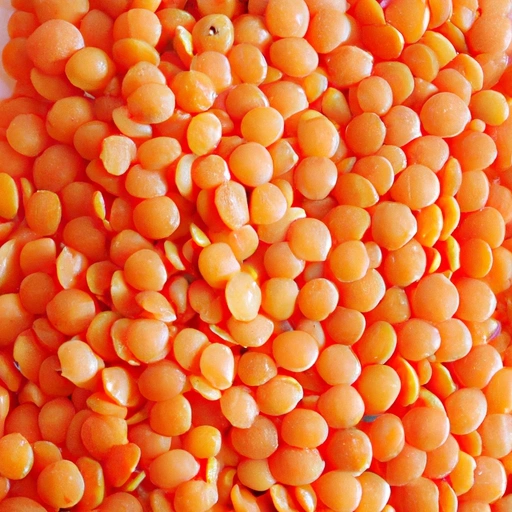Masoor Dal
Description

Masoor dal, also known as red lentils, is a popular legume that is cherished for its versatility, nutritional richness, and ease of cooking. It is a small, round, and typically orange to red-colored lentil that cooks quickly and has a somewhat sweet and nutty flavor. In various cuisines, masoor dal is used to create hearty soups, stews, curries, and even salads. As it is a staple in South Asian cuisine, it is also becoming increasingly popular in American and European kitchens due to its health benefits and adaptability in various recipes.
Common uses
Masoor dal is commonly used as a primary ingredient in dals, which are lentil-based dishes that often include spices, herbs, and sometimes vegetables or meats. It can also be found in side dishes, salads, and as a thickening agent in soups and stews.
Nutritional value
Calories
One cup of cooked masoor dal (approximately 198 grams or 7 ounces) contains about 230 calories.
Protein
Each cup of cooked masoor dal provides about 17.9 grams (or approximately 0.63 ounces) of protein, making it an excellent source of plant-based protein.
Fat
Masoor dal is low in fat, with one cup providing roughly 0.8 grams, which is approximately 0.03 ounces or 2.8 teaspoons.
Carbohydrates
The carbohydrate content in one cup of cooked masoor dal is about 39.9 grams, equal to roughly 1.41 ounces or 2.8 tablespoons.
Vitamins
Masoor dal is a source of several B vitamins, including B1 (thiamine), B6 (pyridoxine), and folic acid (vitamin B9).
Minerals
It is rich in essential minerals such as iron, magnesium, phosphorus, potassium, and zinc, which are crucial for various bodily functions.
Health benefits
Masoor dal is known for its numerous health benefits. Its high protein content is ideal for muscle building and repair, while the dietary fiber aids in digestion and promotes a healthy gut. The presence of folate makes it beneficial for pregnant women and contributes to heart health by helping to lower homocysteine levels. Additionally, the iron content is vital for preventing anemia and boosting energy levels.
Potential risks
Although masoor dal is generally safe for consumption, overconsumption can lead to an excessive intake of fiber, which might result in gastrointestinal issues such as bloating or gas. Furthermore, individuals with kidney problems should monitor their intake of high-potassium foods like masoor dal.
Common recipes
Masoor dal is the star of numerous dishes such as traditional Indian dal tadka, lentil soup, masoor dal khichdi, and red lentil curry.
Cooking methods
It can be boiled, pressure-cooked, or simmered until soft. It is often sautéed with aromatic spices to enhance its flavor.
Pairing with other ingredients
Masoor dal pairs well with vegetables like spinach and tomatoes, grains such as rice and quinoa, and a variety of spices including turmeric, cumin, and coriander.
Summary
Masoor dal is a nourishing and flexible ingredient that has been a dietary staple for millennia. With its notable health advantages and a plethora of culinary possibilities, masoor dal is an invaluable addition to meals worldwide. It caters to a range of dietary needs and preferences, making it suitable for vegetarians, vegans, and those looking for protein-rich alternatives. Its ease of preparation and ability to absorb flavors make it an excellent choice for chefs and home cooks alike, inviting creativity in the kitchen.